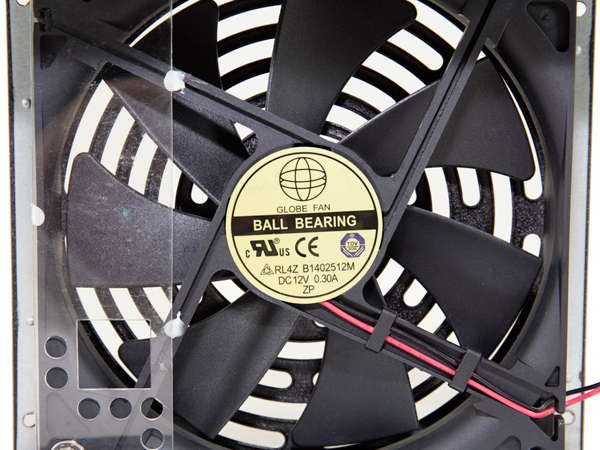EVGA SuperNOVA 650 P2 PSU Review
Why you can trust Tom's Hardware
A Look Inside And Component Analysis
Parts Description
Before proceeding with this page, we strongly encourage you to a look at our PSUs 101 article, which provides valuable information about PSUs and their operation, allowing you to better understand the components we're about to discuss. Our main tools for disassembling PSUs are a Thermaltronics soldering and rework station, and a Hakko 808 desoldering gun.
| Primary Side | |
|---|---|
| Transient Filter | 4x Y caps, 2x X caps, 2x CM chokes, 1x MOV |
| Inrush Protection | NTC Thermistor & Relay |
| Bridge Rectifier(s) | 1x |
| APFC MOSFETs | 2x Infineon IPI50R199CP, (550V, 11A @ 100 °C, 0.199 ohm) |
| APFC Boost Diode | 1x CREE C3D08060A (600V, 8A @ 152 °C) |
| Hold-up Cap(s) | 1x Nippon Chemi-Con, (400V, 680uF, 2000h @ 105 °C, KMR) |
| Main Switchers | 2x Infineon IPI50R199CP (550V, 11A @ 100 °C, 0.199 ohm) |
| APFC Controller | On Semiconductor NCP1653A |
| Switching Controller / Supervisor IC | AA9013 |
| Topology | Primary side: Half-Bridge & LLC Resonant Converter Secondary side: Synchronous Rectification & DC-DC converters |
| Secondary Side | |
| +12V MOSFETs | 6x Infineon IPP041N04N G, (40V, 80A @ 100 °C, 4.1 mohm) |
| 5V & 3.3V | DC-DC Converters: 4x Infineon IPD060N03L G PWM Controller:2x NCP1587A |
| Filtering Capacitors | Electrolytics: Nippon Chemi-Con (105 °C, KY, KZE) Polymers: Nippon Chemi-Con |
| Supervisor IC | AA9013 & LM324ADG |
| Fan Model | Globe Fan RL4Z-B1402512M (140mm, 12V, 0.3 A, 1200 RPM, 92.16 CFM, 24.9 dB[A], DBB) |
| 5VSB Circuit | |
| Rectifier | 1x Mospec S10C60C SBR |
| Standby PWM Controller | 29604 |
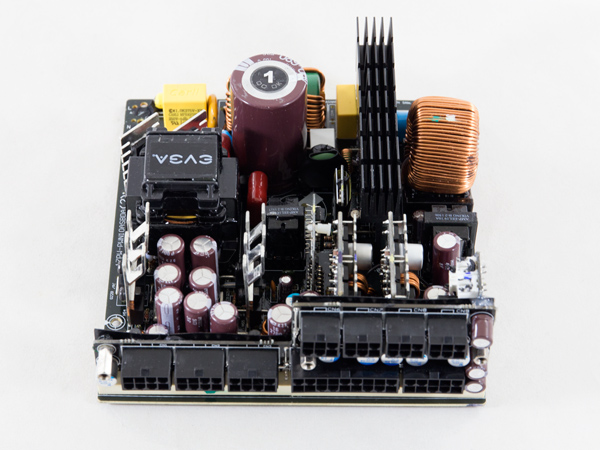
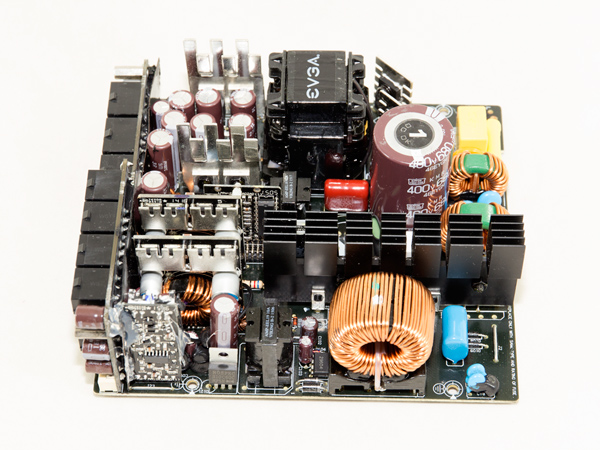
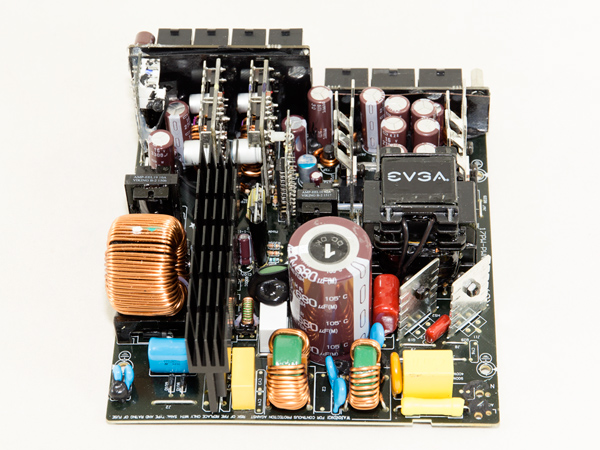
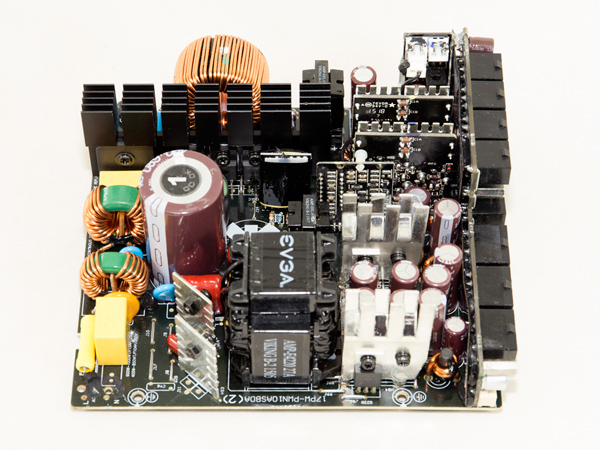
The 650 P2 unit is manufactured similarly to other P2 models as well as EVGA's B2, G2 and T2 product lines. Super Flower uses its top-notch Leadex platform, offering great performance and up to Platinum-rated efficiency levels. The Leadex platform is basically ripple-proof, even under very tough conditions (like the ones we're about to apply).
The 650 P2's PCB isn't densely populated, but it includes all of the components needed for high performance levels. The APFC heat sink is large enough for a Platinum-rated unit, while the secondary side's heat sinks are quite small. This shouldn't be an issue since heat dissipation in Platinum-rated PSUs is restricted.
On the primary side, an LLC resonant converter is used along with a half-bridge topology. On the secondary side, we find a synchronous design along with a couple of DC-DC converters generating the minor rails. Super Flower uses high-quality parts in this platform, including Japanese polymer and electrolytic capacitors, allowing EVGA to provide an very generous 10-year warranty.
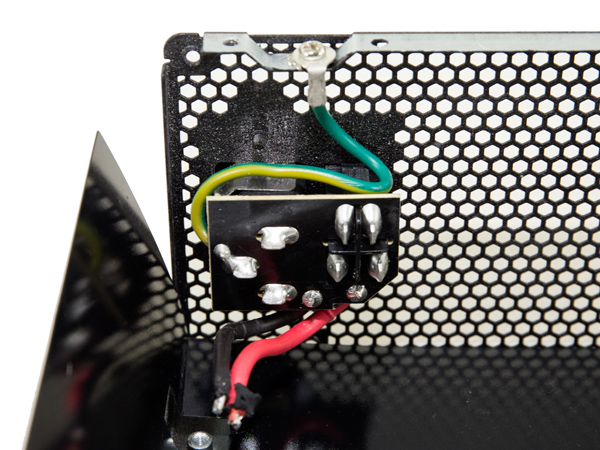
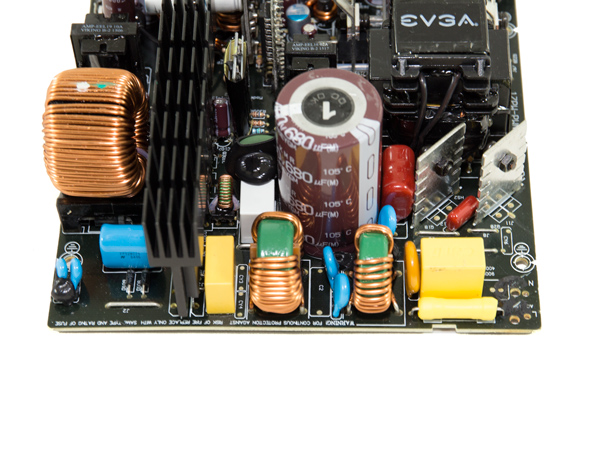
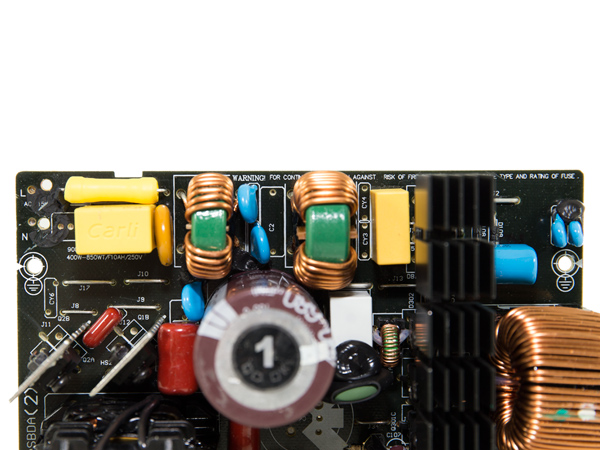
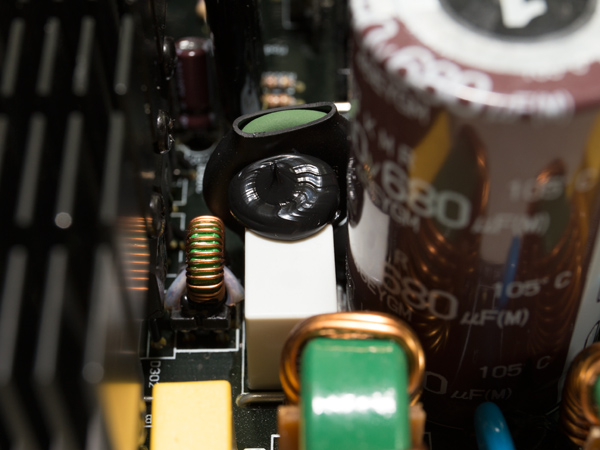
The PCB behind the AC receptacle doesn't host any EMI filtering components. Instead, they're installed on the main PCB and include four Y caps, a pair of X caps, two CM chokes and an MOV. There is also an NTC thermistor that provides protection against large inrush currents, along with an electromagnetic relay responsible for bypassing it once the start-up phase finishes.
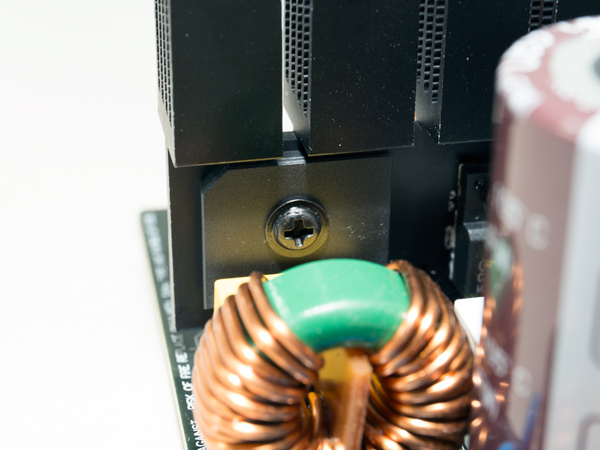
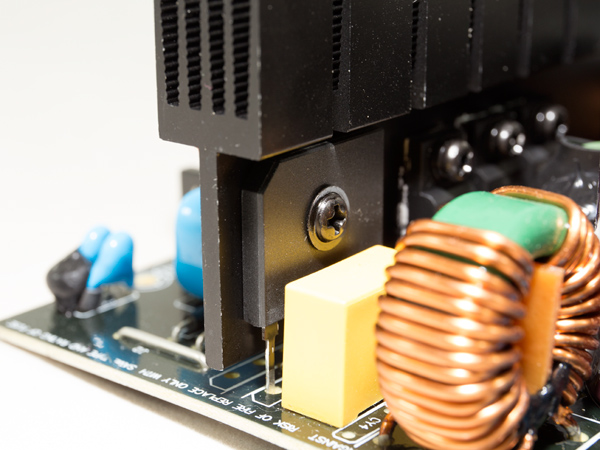
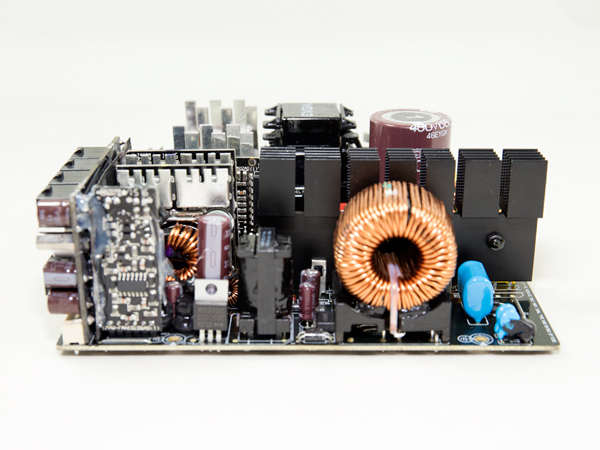
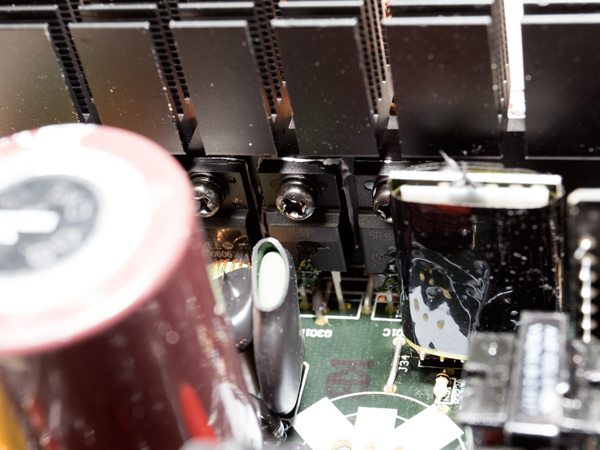
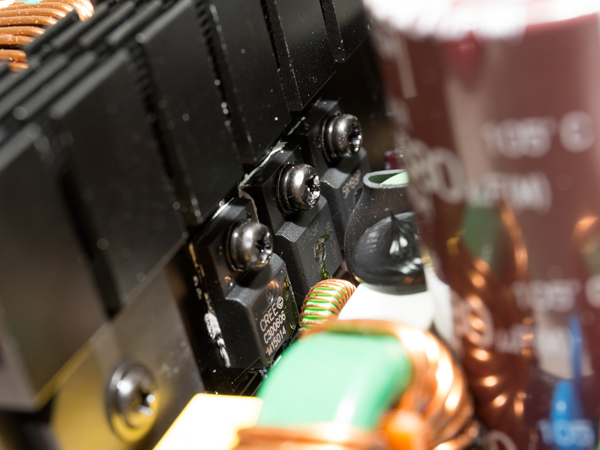
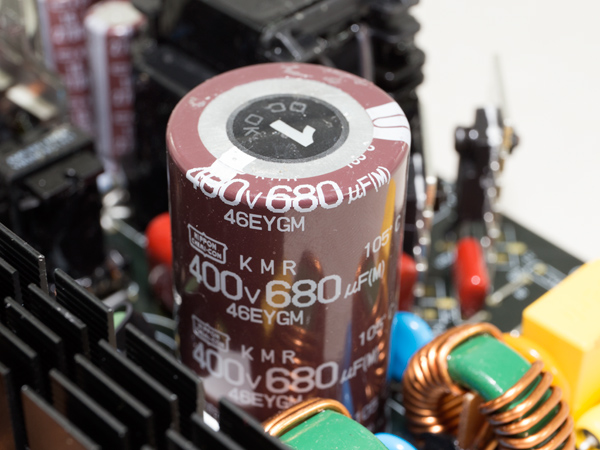
The single bridge rectifier is installed on the APFC heat sink, however its markings are hidden from view, which means we can't identify it. The APFC converter uses two Infineon IPI50R199CP FETs along with a single CREE C3D08060A boost diode. Lastly, the APFC's bulk cap is provided by Chemi-Con (400V, 680uF, 2000h @ 105 °C, KMR), and it has enough capacity to allow for an increased hold-up time. The only downside is a relatively low rating, which is close to the APFC's 380V DC bus voltage.
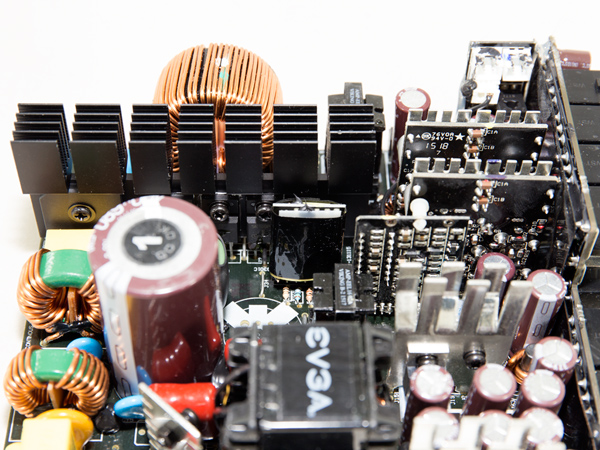
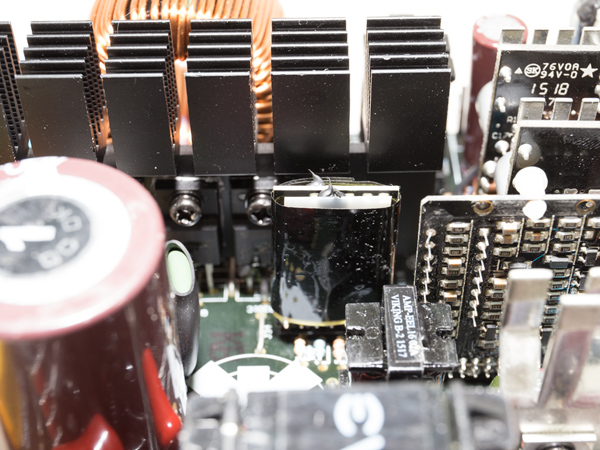
A small, vertical daughterboard covered by black insulating tape hosts the APFC controller, an NCP1653A IC provided by On Semiconductor.
Get Tom's Hardware's best news and in-depth reviews, straight to your inbox.
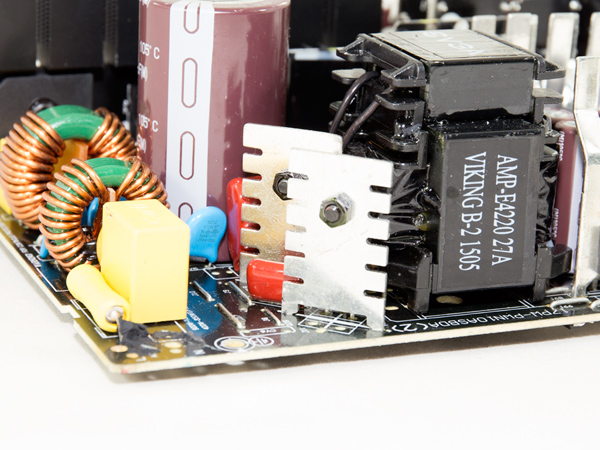
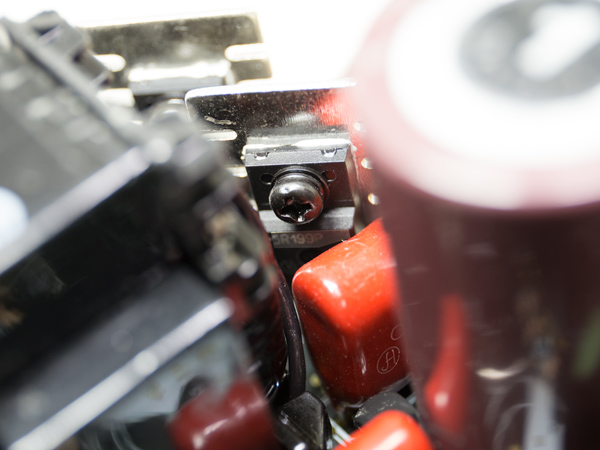
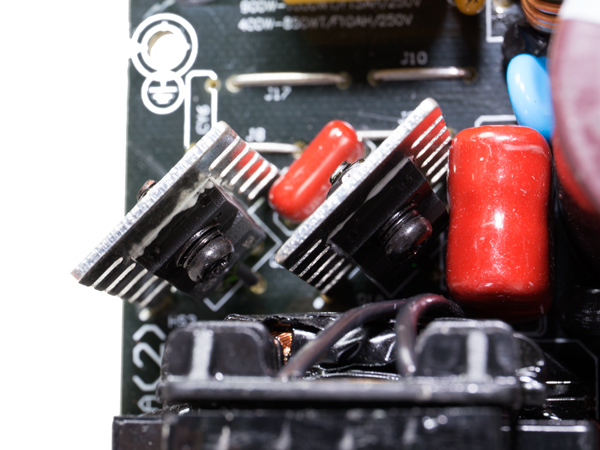
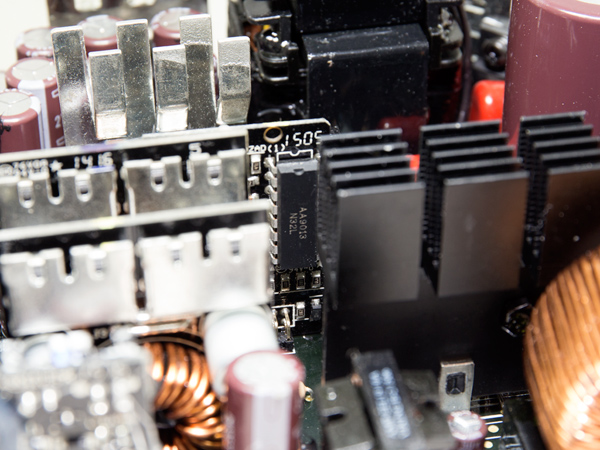
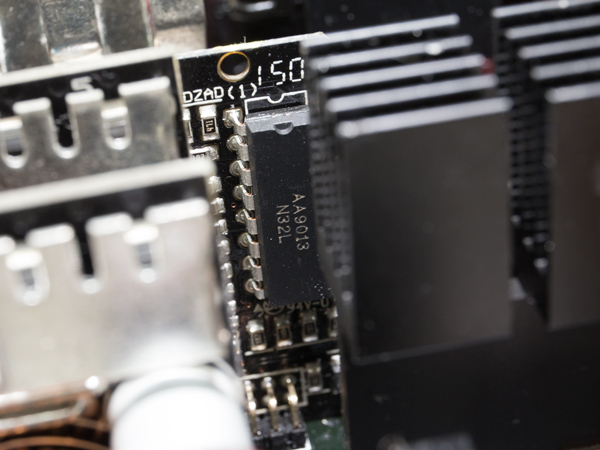
The main switchers, two Infineon IPI50R199CPs, are arranged into a half-bridge topology. An LLC resonant converter provides an efficiency boost by providing almost lossless switching. The LLC resonant controller is a proprietary IC with model number AA9013. The same IC handles the PSU's protection features, and on the same PCB, we also found an LM324ADG quad op-amp that helps out.
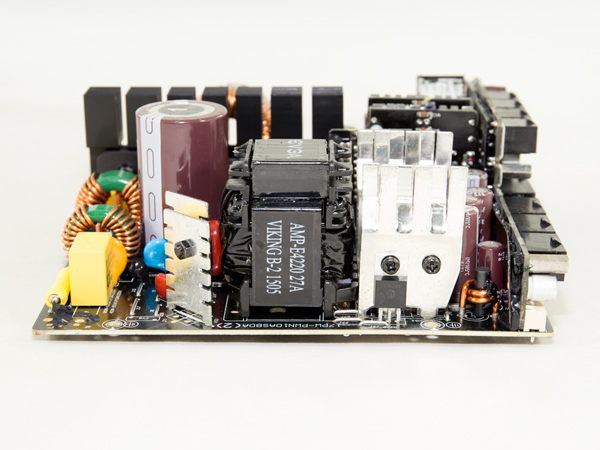
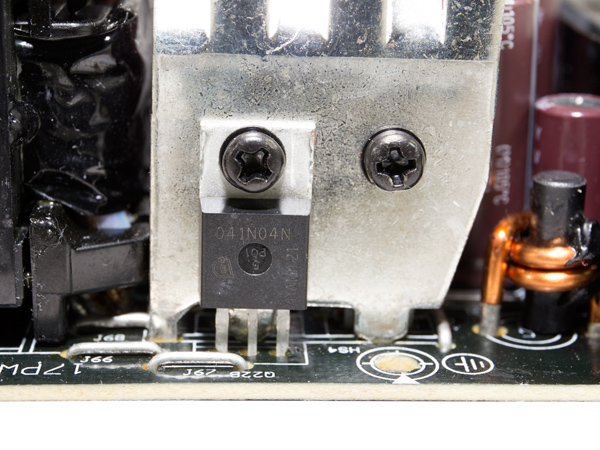
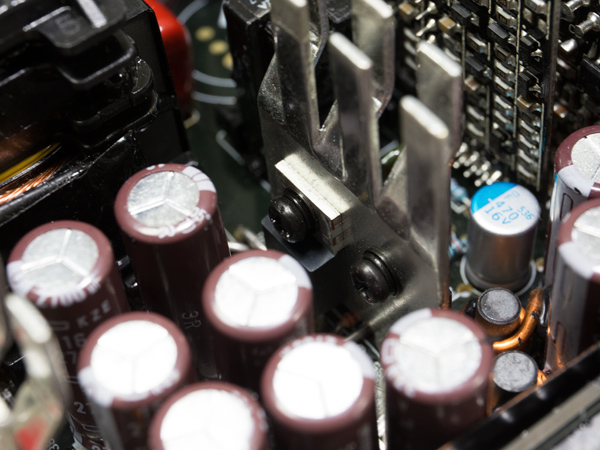
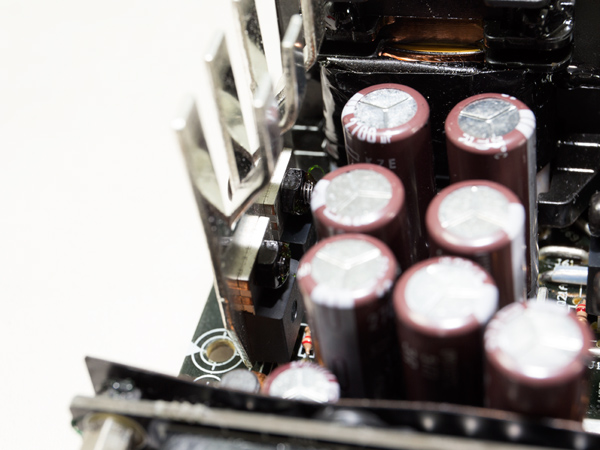
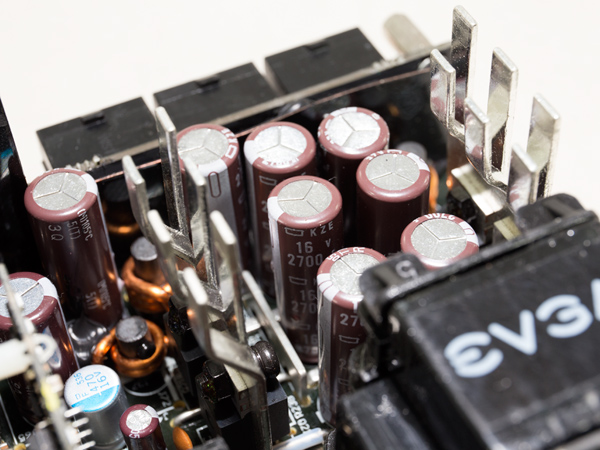
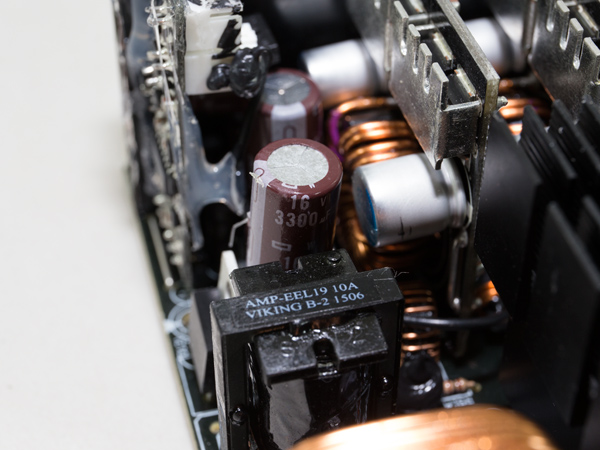
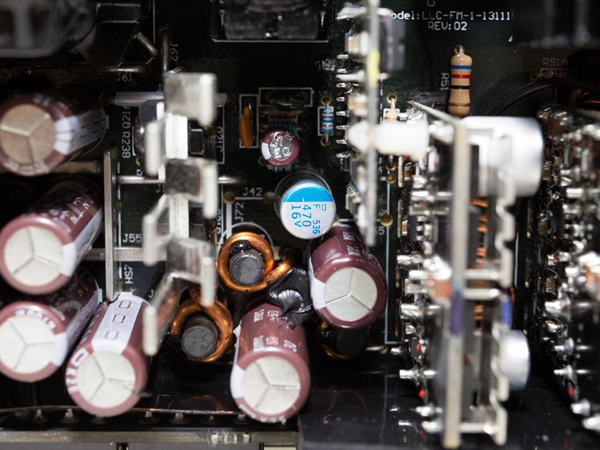
On the secondary side, six Infineon IPP041N04N G FETs installed on two small heat sinks are responsible for the +12V rail's regulation. Among those heat sinks, several electrolytic Chemi-Con caps (all rated at 105 °C) are used for ripple filtering. We also found a single polymer Chemi-Con cap in the same area.
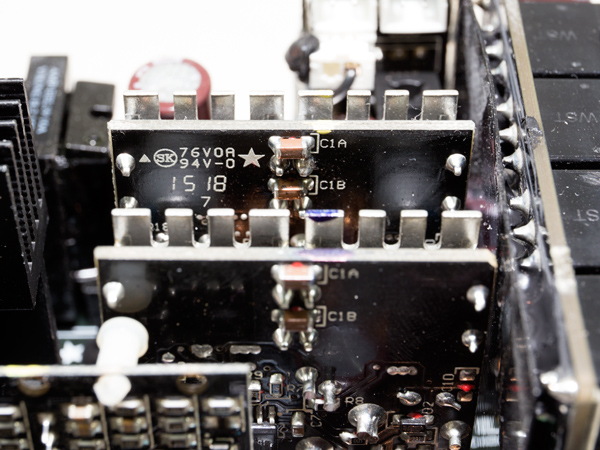

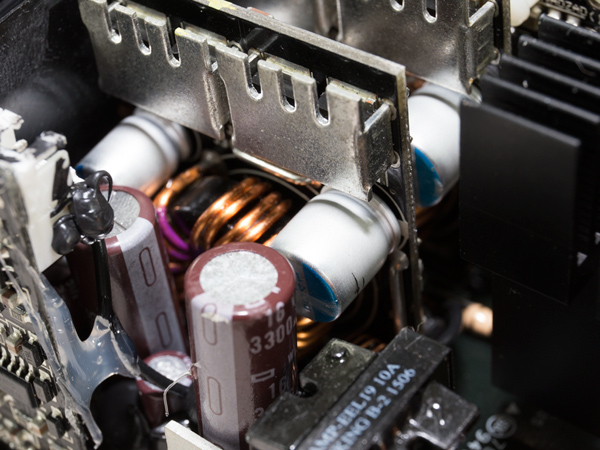
Two DC-DC converters generate the minor rails. Each one uses a couple of Infineon IPD060N03L G FETs, along with a NCP1587A PWM controller. We noticed metal shields above the FETs, used for EMI protection.

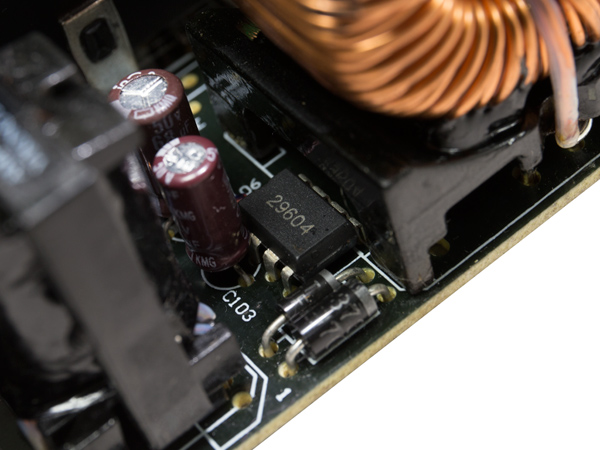
The fan controller's PCB uses an LM324ADG op-amp. As usual, we applied lots of glue onto the PCB's base since it can easily break once you try to detach the fan and ECO switch headers.
Right next to the fan control PCB is a Mospec S10C60C SBR that handles regulation of the 5VSB rail. The standby PWM controller is a small IC with a "29604" marking, which didn't reveal any clues about its origin.
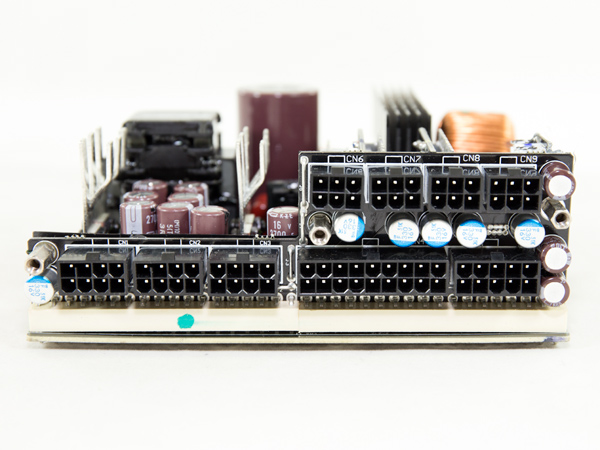
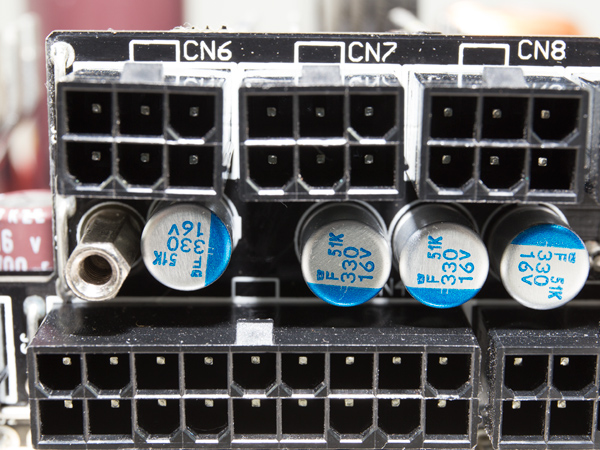
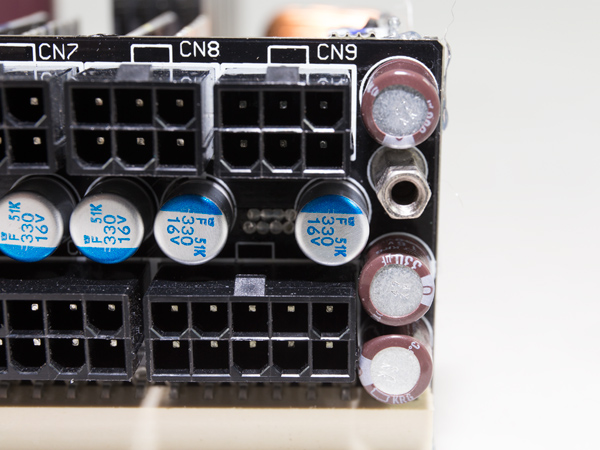
On the front side of the modular PCB, several Chemi-Con polymer and electrolytic caps provide extra ripple filtering to the rails.
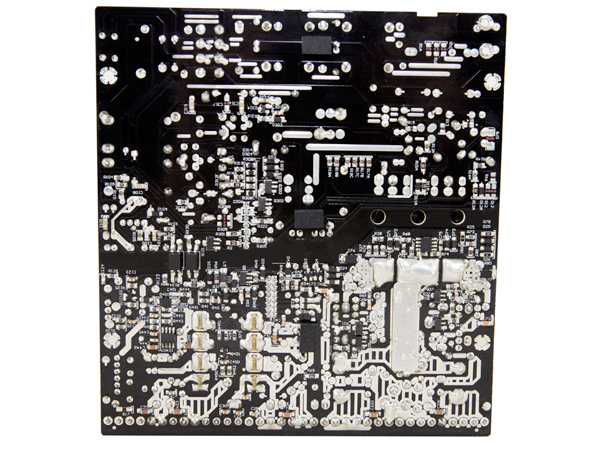
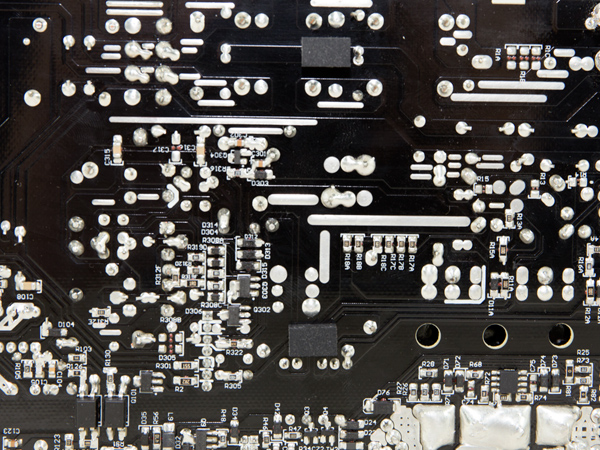
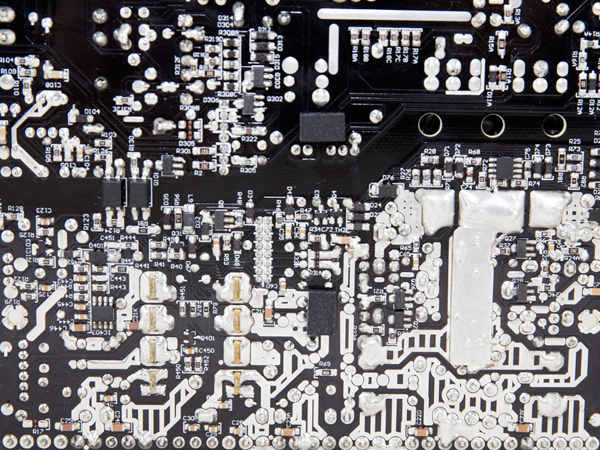
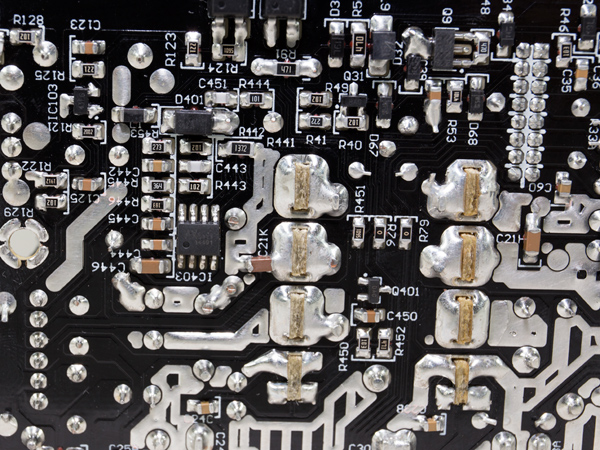

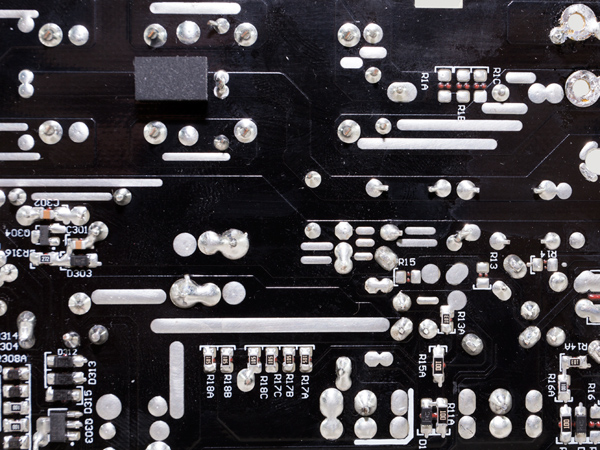
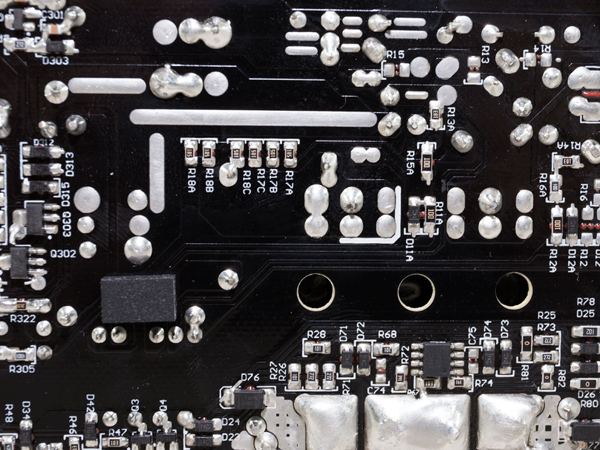
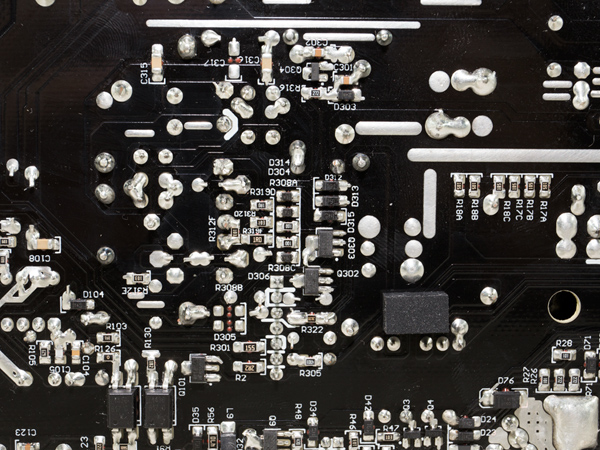
Overall, soldering quality is pretty good, although not at the same level as Flextronic's and Delta's high-end implementations.
Super Flower insists on using ball-bearing fans, even though the competition has moved on to fluid dynamic-bearing (FDB) fans. While FDB fans offer longer lifetimes, the ball-bearing variety can last a long time as well. With ECO (semi-passive) mode enabled, EVGA's fan should only spin for short periods of time under normal conditions; we're not worried about its long-term prospects.
Globe Fan manufactures the RL4Z-B1402512M (140mm, 12V, 0.3A, 1200 RPM, 92.16 CFM, 24.9 dB[A]) fan. It's a low-speed model, and along with a relaxed profile and semi-passive operation, it should complement EVGA's PSU with quiet acoustics.
Current page: A Look Inside And Component Analysis
Prev Page Packaging, Contents, Exterior And Cabling Next Page Load Regulation, Hold-Up Time And Inrush Current
Aris Mpitziopoulos is a contributing editor at Tom's Hardware, covering PSUs.
-
cst1992 $120 is a good price for a Platinum 650W PSU. That used to be the price for Gold units with half the warranty a couple of years ago.Reply -
TbsToy Your reviews are so jaded. Anything for the ad dollars, right? Not going to go all the way here but as an example but why didn't you compare the Antec EA 650 Platinum power supply for a more fair apples to apples test instead of the Bronze 80 one? Yeah, I, know why. You guys just keep going down hill.Reply
Walt Prill
-
Aris_Mp Before you dive into conspiracy theories etc. can you tell me where you saw the bronze Antec unit? Last time I checked the Antec Edge 650 which is included in the comparison has Gold efficiency. Also I can only include PSUs which I tested with this setup and the EA 650 Platinum isn't among them. And even if it was it wouldn't do better than the EDGE 650 since it uses a budget, ACRF platform which offers average load regulation and ripple suppression.Reply
And a piece of advice, better have your facts straight before you jump into conclusions.
Merry Christmas to all! -
cst1992 @Aris_Mp I think he's talking about the EA-650 Bronze on the first page of the review. The EA-650 Platinum is also on Newegg, and it's actually cheaper than the EVGA by $6.Reply
http://www.newegg.com/Product/Product.aspx?Item=9SIA24G28N5004&cm_re=antec_ea_650-_-17-371-056-_-Product
Now that I think about it, none of the products on the first page are similar in price to this one while being Platinum, and the CoolerMaster is actually the wrong wattage. Why is that? The products should be similar in price, at least. -
Aris_Mp I have no control on the product prices shown on the first page. This is an automated script that looks on all PSUs mentioned in the review and depicts their prices. Also since I don't have so many PSU reviews with 115V input, I have to include into my comparison charts, at least in some cases, PSUs that have slightly different capacity and features than the one under test. Once I have a capable PSU database this won't be a problem any more.Reply
Also including a product in a pricing list is another thing with including it into a comparison chart. In any case I advice all of you not to lose the forest for the tree(s) and read the entire review before you draw any conclusions or make purchase decisions. Finally, in a PSU review the final rating is based on facts and numbers so the final rating is easily supported. -
Take_Out I have been in electronic/electrical power distribution field since 1964 (old fogie, used slide rules {slip sticks} to study field effect transistors, heh) working/studying/troubleshooting in a large assortment of types and uses of devices for military and industrial and residential.Reply
In gaming computer type PSU builders (not brandnames put on them), I like Super Flower, Seasonic, Antec and used to like PC Power and Cooling before the takeover, donno now. Forgot some I am sure. Use the performance list here to make PSU decisions in a fair manner.
I build gaming computers for family and friends and they kick ass for the cost and last a long time usually unless a part fails. 8800GT and 560ti video cards I liked. Now like GTX 970s and 960s for my money level. 750 and 750tis and some others nearby are only Direct X12 cards in 7 series lineup, go look it up in Wikipedia, despite deceptive advertising on Newegg that all 7 series cards are Direct X12 compatible, not like them. Must be nubies there for the holidays.
HATE changing OS just cause engineers need something to do, darn it. I know I simplify it, but it is THERE that they make you spend money and worse, learn their "NEW" way to make it work, how utterly fantastic for them. I think engineers are behind a lot of viruses so they can fix some of them, although there are bad actors for sure out there with extremists.
I think buying a well known brand (Lenovo, Dell, ASUS, etc) of regular NEW i5 4590 plain model cpu or so computer (absolutely NOT small form factor or s or t on end, ugh, regular-sized ATX board mid tower with 8 or 16GB of RAM, and a 1TB HrdDrve WD or Seagate included in price of about 500USD, then add a 240 or 500GB SSD recommended by Tom's, for OS and top games you play to load a lot faster by a wide margin, really. Steam takes up a LOT of room. Then put a good Nvidia GTX-970 or 960 into it and game away with a darn warrenty. Plus engineers have something to do with making all the parts work together, is quite a job........ really. People who make money depend on those types of puters to feed thier kids, they have to work right, not just having fun with them.
Really like Intel cpus and Nvidia 900 series video cards right now, dem magic, was a time I liked 3DFX(VooDoo2)SLI and ATI(RAGE) cards, even AMD cpus a decade or so back with the X2 64bit Athlons that buried Intel for a while.
TUROK Dinosaur Hunter is coming back, OMGosh. Game hooked me on 3D gaming for real.
EVGA seems to be broadening their approach to vending PSUs. Might prove interesting.
Usually the companies that have stayed in business for many decades are doing something right and it tells. EVGA hasn't yet, but seems to be trying hard, I like their brand of video cards and they support them well.
seriously something wrong with me, I could keep going and going, sorry....
Merry Christmas. -
f-14 too expensive a good PSU should cost $10 per 100w on average nd at the cheapest be the price of the amps on the +12v rail so in this PSU's case average price $65 and sale priced at $54.Reply
-
TomaszC I have a question regarding Fan RPM, Delta Temperature And Output Noise for load range 300W-400W - does the fan RPM changes smootchly in temperature/load function, or just switch from 0RPM to 800RPM?Reply
